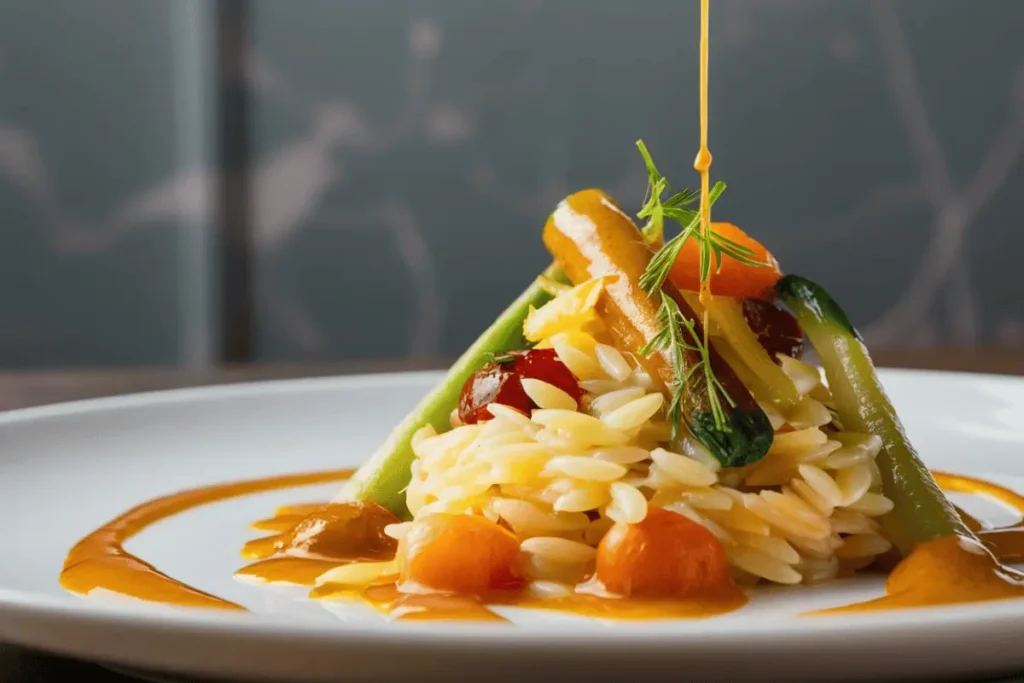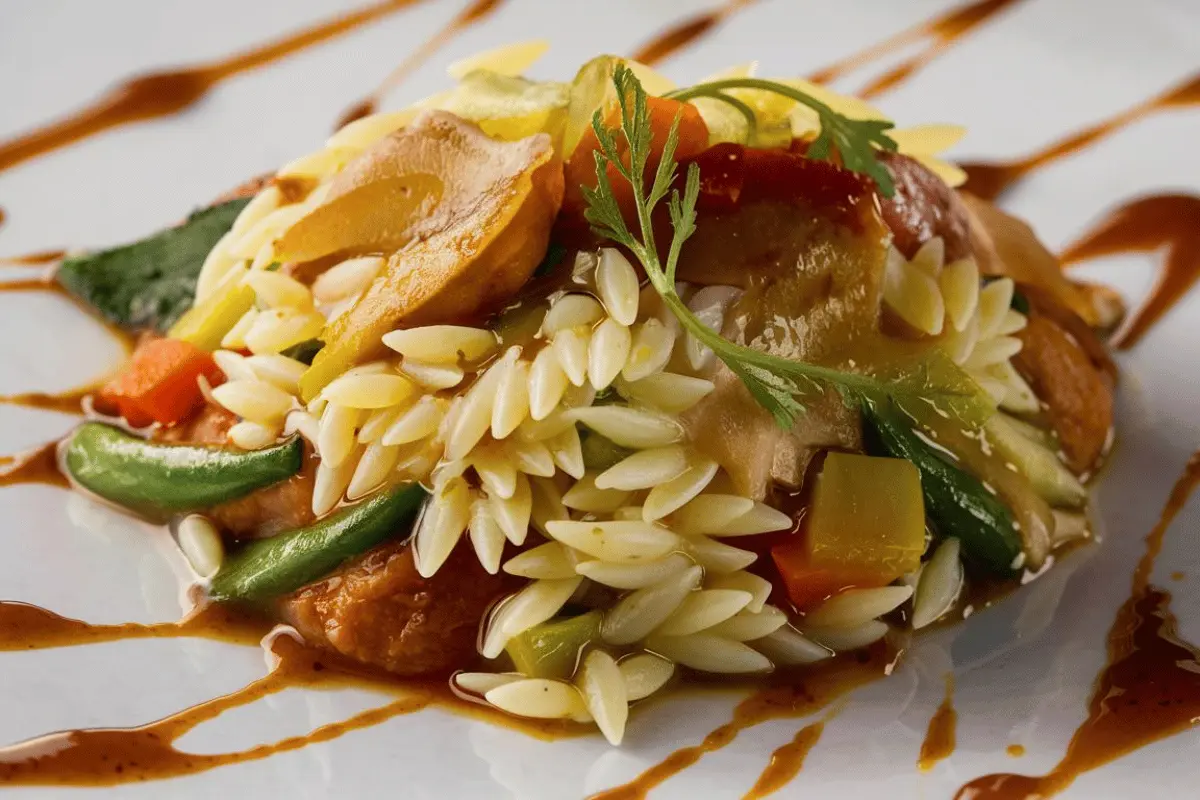Orzo is a small, rice-shaped pasta that has carved out a niche in kitchens around the world. Its versatility, quick cooking time, and ability to absorb flavors make it a staple in Mediterranean cuisine and beyond. Whether you’re looking to whip up a quick weeknight meal or a show-stopping dish for guests, this pasta can be your go-to ingredient. In this guide, we’ll delve into a detailed orzo recipe, explore variations, offer pairing suggestions, and provide insights on how to make the most of this unique pasta.
What is Orzo?
Orzo, also known as risoni, is a type of pasta that resembles large grains of rice. It’s commonly used in Mediterranean dishes, particularly in Greek and Italian cuisines. While it is often served as a side dish or in soups, it is versatile enough to be the star of the meal. Its small size allows it to cook quickly, usually within 7-10 minutes, making it an excellent choice for those nights when you need dinner on the table fast.
Mediterranean-Style Orzo Recipe
This Mediterranean-style pasta dish is a perfect blend of flavors, combining the nuttiness of toasted pasta with the brightness of fresh herbs and the richness of sun-dried tomatoes and Parmesan cheese. Here’s how to make it:
Ingredients
- 1 1/2 cups orzo pasta: The star of the dish, this pasta is toasted to enhance its flavor.
- 2 tablespoons extra virgin olive oil: Used for toasting the pasta and creating the base of the sauce.
- 5 cloves garlic, minced: Adds a rich, aromatic flavor.
- 1/2 lemon, juice of: Provides a fresh, tangy contrast to the richness of the other ingredients.
- 1 cup fresh parsley, chopped: Adds color and a burst of freshness.
- 1/2 cup fresh dill, chopped: Complements the parsley and adds a slightly sweet, grassy flavor.
- 1/3 cup sun-dried tomatoes, chopped: Introduces a chewy texture and concentrated tomato flavor.
- 1/2 to 3/4 cup grated Parmesan cheese: Brings creaminess and a savory, umami flavor.
- Kosher salt and black pepper to taste: Season the dish to perfection.
Instructions
- Toast the Orzo: Start by heating 2 tablespoons of extra virgin olive oil in a large saucepan over medium-high heat. Add the pasta and toast, stirring frequently, until it turns golden brown. This step is crucial for developing a deep, nutty flavor in the pasta.
- Cook the Pasta: Add about 7 cups of boiling water to the pan, season with a generous pinch of kosher salt, and cook the pasta according to the package instructions until al dente. This usually takes 7-8 minutes. Reserve a cup of the starchy cooking water before draining the pasta.
- Prepare the Sauce: In a separate large pan, heat another 1/2 cup of olive oil over medium heat. Add the minced garlic and cook until fragrant, about 1-2 minutes. Be careful not to burn the garlic. Stir in the lemon juice and a bit of the reserved pasta water, bringing the mixture to a simmer.
- Combine Everything: Add the cooked pasta to the pan with the garlic and lemon sauce. Toss well to combine. Stir in the chopped parsley, dill, and sun-dried tomatoes. Add more pasta water as needed to create a creamy consistency.
- Finish and Serve: Finally, stir in the grated Parmesan cheese and season with salt and pepper to taste. Serve the pasta warm, garnished with additional parsley or dill if desired.
Tips for Cooking Orzo
To get the best results when cooking this type of pasta, consider the following tips:
- Use Quality Olive Oil: Since olive oil is a key ingredient in this dish, using high-quality extra virgin olive oil can significantly enhance the flavor.
- Don’t Skip the Toasting: Toasting the pasta before cooking is an essential step that adds depth to the dish. It’s an extra minute or two that’s well worth the effort.
- Fresh Herbs are Best: Fresh parsley and dill provide the best flavor and texture. Dried herbs can be used in a pinch, but they won’t deliver the same vibrancy.

Variations on the Mediterranean-Style Orzo
This pasta is incredibly versatile, so feel free to experiment with these variations:
- Lemon and Herb Orzo: Skip the sun-dried tomatoes and increase the amount of fresh lemon juice and zest for a zesty, refreshing version of this dish. Add a handful of fresh mint for an extra layer of flavor.
- Creamy Parmesan Orzo: For a richer dish, cook the pasta in a mixture of chicken broth and cream. Stir in a cup of grated Parmesan towards the end for a luxurious, creamy pasta that pairs beautifully with roasted chicken or grilled vegetables.
- Orzo with Roasted Vegetables: Roast a variety of vegetables like zucchini, bell peppers, and cherry tomatoes, then toss them with the pasta for a hearty, colorful meal. Finish with a sprinkle of feta cheese or goat cheese for a tangy kick.
- Spicy Orzo with Sausage: Brown some Italian sausage in the pan before cooking the garlic and herbs. Add a pinch of red pepper flakes for heat, and toss the pasta with the sausage for a robust, spicy dish.
Pairing Orzo with Proteins and Sides
This pasta’s subtle flavor makes it an excellent base for a variety of proteins. Here are a few ideas for pairing:
- Grilled Chicken: The smokiness of grilled chicken complements the fresh flavors in the pasta. A simple grilled chicken breast seasoned with lemon and herbs is a perfect match.
- Seafood: This pasta pairs beautifully with shrimp, scallops, or white fish like cod. Cook the seafood with a bit of garlic and lemon, then serve it over a bed of pasta.
- Lamb: For a more robust pairing, try this pasta with grilled lamb chops or a lamb stew. The richness of the lamb is balanced by the freshness of the pasta.
For sides, consider serving the pasta with a simple green salad dressed in a light vinaigrette, or steamed vegetables like asparagus or green beans.
Health and Nutritional Insights
Like other pasta, orzo is a good source of carbohydrates, which provide energy. It also contains some protein, and when combined with vegetables and lean meats, it can be part of a balanced diet. Here’s a closer look at the nutritional aspects:
- Whole Grain Orzo: Opt for whole grain pasta when possible. It has more fiber than traditional white pasta, which can help with digestion and keep you feeling full longer. Whole grain pasta also contains more vitamins and minerals, making it a more nutritious choice.
- Healthy Fats: The use of extra virgin olive oil in this dish adds heart-healthy fats. Olive oil is rich in monounsaturated fats, which have been shown to reduce the risk of heart disease.
- Fresh Herbs and Vegetables: The herbs and sun-dried tomatoes in this recipe aren’t just for flavor; they also add important vitamins, minerals, and antioxidants. Parsley, for instance, is high in vitamin K, which is important for bone health.
Frequently Asked Questions
1. Can I make orzo ahead of time?
Yes, this pasta can be made ahead of time, but it may absorb additional liquid as it sits, which can change the texture. If making in advance, consider undercooking the pasta slightly, and adding a bit more broth or olive oil when reheating to restore its creaminess.
2. Can I freeze leftover orzo?
While this pasta can technically be frozen, cream-based pasta dishes don’t thaw well, as the sauce can separate. It’s generally best to store leftovers in the fridge for up to 3-4 days. Reheat on the stovetop with a splash of broth or water to prevent it from drying out.
3. What are some good alternatives to Parmesan cheese?
If you’re looking for a non-dairy option, nutritional yeast is a great alternative that provides a similar umami flavor. If you prefer a different type of cheese, Pecorino Romano or Asiago are good substitutes for Parmesan.
4. Can I make this dish gluten-free?
Yes, gluten-free orzo is available in many grocery stores. Simply substitute regular pasta with a gluten-free version and follow the recipe as written.
5. What can I do with leftover orzo?
Leftover pasta can be transformed into a delicious salad by adding chopped vegetables, a bit of feta cheese, and a light vinaigrette. It can also be used in soups or as a base for a grain bowl with your favorite proteins and toppings.
Conclusion
Orzo is a versatile ingredient that can elevate any meal, from simple weeknight dinners to more elaborate dishes for special occasions. Its ability to absorb flavors, combined with its quick cooking time, makes it a convenient and delicious choice for busy cooks. Whether you prefer it as a side dish or the main event, orzo is sure to become a staple in your kitchen.
By following the tips and variations outlined in this guide, you can create a wide range of orzo dishes that cater to your tastes and dietary preferences. Enjoy experimenting with different flavors and pairings to discover your favorite way to enjoy this unique pasta.
For more orzo recipes and inspiration, consider exploring resources like The Mediterranean Dish and Jo Cooks
